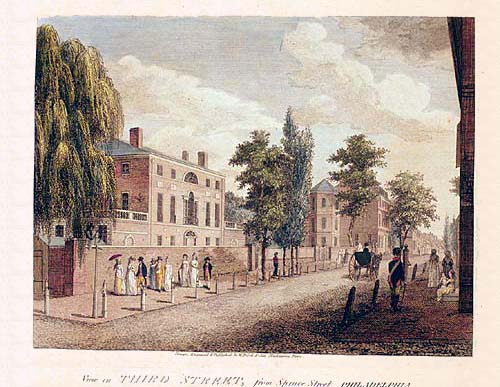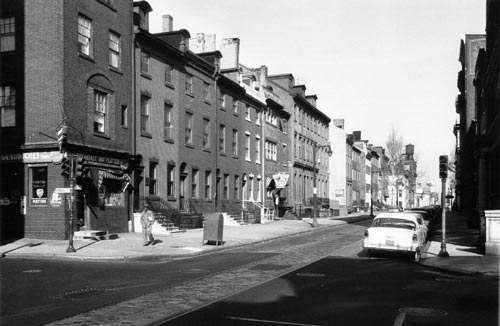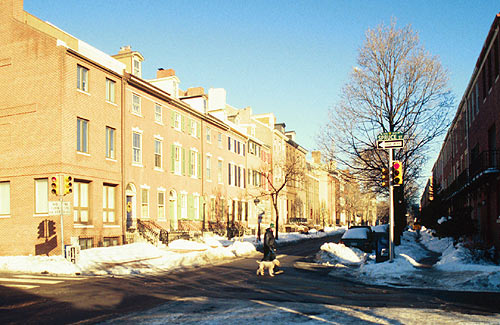The handsome Federal style mansion in the (MG-L) was built in 1789 by William Bingham, a wealthy merchant, banker and legislator. The house was set amid extensive formal gardens and was probably further back from the street than appears in the engraving. A self-supporting wide marble staircase graced the front hall and mirrored parlors decorated with paintings and magnificent imported furnishings were the settings for the most elegant entertaining. Bingham and his beautiful wife, Anne Willing, made their mansion the center of social life in Philadelphia. Anne's father, Thomas Willing, a prominent merchant, partner of Robert Morris (1754-93) and president of the First Bank of the United States was a near neighbor, as was Samuel Powel , the last mayor of the city under Penn's charter and the first under the Charter of 1789. With The Binghams, Willings and Powels the area was one of the most fashionable in the city. The Powel house (BG-R) is a historic house museum today. In 1806-07, after the deaths of the Binghams (Anne's in 1801, untimely at age 37, and William's in 1804 at age 52), their mansion was turned into a public hotel named Mansion House. It was damaged by fire in 1823, repaired, again burned in 1847 and finally razed about 1850.
Photographs
The six houses beyond the corner property on the left were built about 1815. Today they are fine examples of the restorations required since the late 1950s of owners of historically significant properties in the Society Hill area. Third Street at Spruce is in the heart of that area which is bounded by Walnut, Lombard, Front and Eighth Streets. It contains the nation's best collection of Colonial and early Federal buildings. The name "Society Hill" is derived from The Free Society of Traders, a London company that Penn incorporated in 1682 to advance the settlement and development of Pennsylvania. Included in its land holdings was a high point along the Delaware River, south of Dock Street, on which its trading offices stood. By 1686 the Society abandoned its trading operations and in 1723 its lands were sold, but that quarter of the city continued to be called Society Hill.
Back Next




